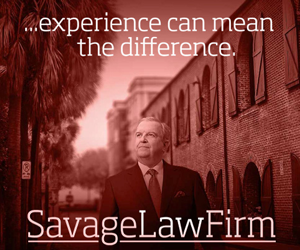By Paul Gable
The beaches and the upcoming Tourism Development Fee referendum in North Myrtle Beach have hit the pages of local media recently.
The beaches must be protected from the potential dangers of offshore drilling and they must be routinely renourished in order to keep tourism viable in the city, according to recent articles.
Many arguments against the TDF were enumerated in a recent op-ed by a North Myrtle Beach resident. Unfortunately, the writer was arguing against the example of how Myrtle Beach has chosen to implement the TDF rather than how it can be positively applied in North Myrtle Beach.
There is no question that tourism is the lifeblood of all the coastal communities along the Grand Strand. In many ways, North Myrtle Beach has set an example that the others should strive to follow.
The business community has done a good job of advertising with its own dollars, promoting the North Myrtle Beach brand as a safe, clean, family friendly location.
The city has added to this effort by providing quality public safety services, stormwater outfalls to keep bacteria levels near the beaches low and other infrastructure that benefits both local citizens and tourists alike.
Properly used, the TDF, if approved, could be used to supplement these private and public efforts to keep the city competitive in the family friendly tourism market.
According to state law, from the second year onward, the TDF revenues can be split 80% for out of area tourism marketing and 20% to the city for property tax relief and/or tourism related public safety, infrastructure and other similar projects. The decision on the split and how the city portion is spent rests solely with the city council.
It was proposed in the above mentioned op-ed that it would be nice to be able to apply all of the revenue from the one percent fee totally to public safety, infrastructure and the like.
In fact, this was attempted by a bill submitted by Sen. Greg Hembree last year (S.426). Called the Municipal Tax Relief Act, this bill proposed a one-cent sales tax on all taxable purchases in the city that would go to city coffers to offset some of the demands on property tax revenues.
However, S.426 was introduced one year ago and has never made it out of committee. In recent conversations, Mayor Hatley expressed doubts that the bill will see any movement during this legislative year and Sen. Hembree said he did not believe the bill would ever come out of committee. It’s a great idea that would help relieve some of the problems for local governments caused by Act 388 of 2006, but it’s not going to happen.
The TDF can be a partial solution for what was attempted in S.426. It would provide the city council with the opportunity to receive the equivalent revenue of approximately 3 mils of property tax from the second year onward. By state law, a small portion of this revenue must go toward owner-occupied property tax relief, but the bulk would be available for public safety needs, parking infrastructure, beach renourishment and similar projects at the total discretion of city council.
City council members reportedly requested Hembree to submit the bill that became S.426. Rather than continue to hope for passage that is not going to happen, why not use revenue from a TDF, which is already state law, if the referendum is approved?
This would be a win-win for both the North Myrtle Beach business community and the city council.
The marketing revenue would be used to maintain the North Myrtle Beach tourism brand against stiff competition from the Myrtle Beach Chamber of Commerce (where the TDF will be entering its second 10 year run next year.
The NMB city council would have additional revenue, not only from the TDF, but also from accommodations and hospitality taxes that it could put toward needed infrastructure and services.







Speak Up…